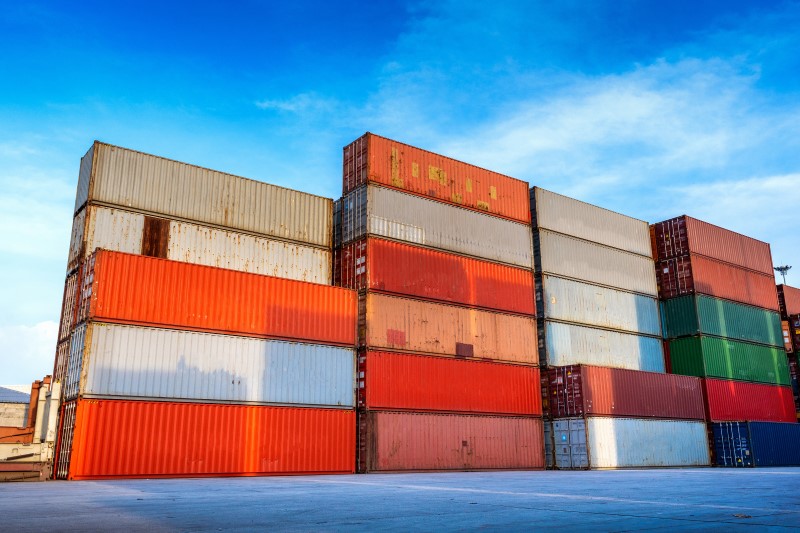How To Start A Logistics Company? An Expert Guide

Do you want to start a logistics company of your own? If yes, you need to consider specific parameters that can help you achieve your business goals. It would be best if you thought about different factors while starting the logistics company of your choice.
Logistics is an umbrella term, and if you want to develop your business in this field, you need to make your business analysis accordingly. However, how to start a logistics company will no longer be a question if you maintain certain key factors regarding it.
While you want to ship your products and consignments from one country to another, you need to keep in mind certain essential factors in mind. While you want to start your own logistics and transport company, you need to ensure that you maintain the proper norms of the state to make things transparent.
Different Ways You Can Opt To Start Your Logistics Company
Today, logistics businesses are in high demand. You have to take care of several factors when you want to start a Logistics company. Let’s find out some of the core issues regarding it.
1. Define Your Business Model First
You have to understand and decide the business model of your organization. You can do two things first: either go with the existing business model or opt for the franchise business model. Both business models have their own benefits and disadvantages.

If you’re looking for a way to enter the logistics industry with a proven system, a franchise could be a great option. There are many franchise businesses for sale scottsdale and other growing markets that offer built-in brand recognition and operational support, helping new business owners hit the ground running. This approach can reduce some of the risks that come with starting from scratch while still allowing room for growth.
2. Register Your Company
The second most crucial step is to register your company with your country’s government, and you have to acquire the logistics license to do business. It will help you to function as a logistics company. After that, your company will receive the logistics registration certificate, like:-
- Shop Act License.
- Taxation Number and
- Permission to do your business.
How to start a logistics company will no longer be a difficult question to answer for you. Instead, it will help you to get things done correctly at the right time.
3. Make Registrations With Local Search Companies
You can make the proper registrations with the local search companies to get good leads for your business. In addition, companies like Sulekha and Just Dial will provide you with the information you need to expand your business connections.
Many people have this confusion in their minds about how to start a logistics company. You have to make your choices properly to achieve your goals in the best possible way. This mediator company will offer special packages for appropriately making the registrations. You can then convert the leads into a deal.
4. Visit Popular Transport Facilities in Towns & Cities
You can visit popular transport facilities in the town and city to make a good deal with them. However, receiving orders and the transport partners have to make proper coordination while you want to make your services available to the distant cities all across the globe.
If you own the truck, then you can use it as a fleet owner. You need to make your choices correctly while you own the facilities for the town and the cities, for maintaining proper transport facilities. How to start a logistics company? It is no longer a significant issue for you.
5. Advertise Your Company
Certain books are being shared with a transportation and logistics company in the city or town of the company to advertise things correctly. It will help your company notice, and the company will be happy to collaborate with you.

Your ads will tell customers, such as fleet owners, commission brokers, or both, to take orders and deliver them in different parts of the world.
Depending on your current business status, you have to make things possible as you wish them to happen. Therefore, branding forms an essential part of building your logistics company, even if the business domain is a bit different.
6. Half Truck Transport Or Full Truck Transport
The previous point of delivery services, such as courier, will get more significant orders of small transport and large truck loads. Therefore, build connections in the field of transportation. Then, owners who do such delivery can effectively make the transport communications.
You can make the delivery by contacting them at your end. Here, prepare proper plans in such a way that they can help you to achieve your goals. Hence, the next time, you will know whom to choose when you get the order. Again, proper planning here holds the key.
7. Grow Your Business Connection
Growing the business connections will help you answer the question: how to start a logistics company? You will have some clear ideas about it. It is because when you invest your money in building business connections both organically and inorganically, it will double your business.

Here, effective planning holds the key, and you have to maintain the proper sequence in the correct order to achieve your objectives to make things happen in your favor. For example, you do not need much capital to start with, while you are willing to begin your logistics company if you have solid connections.
How Much Does It Cost To Start A Logistics Company?
When you are launching your logistics company, you must know the amount of cost involved. It will help you to strategize things fruitfully to provide you with better returns from your investments.
- First, you need to understand the sources of the capital that you require for starting your logistics company. Then, you can choose the option of the bank, bootstrapping, and investors.
- The next and most vital step for starting a logistics company is understanding the specific expenses associated with the logistics company, such as license, toll expenses, fuel and driver skills maintenance, and development & training costs.
- To keep your budget intact, you need to keep in mind the operating costs and maintenance expenses for managing the daily affairs of your business.
- You also need to keep your certain sum of money safe and aside while maintaining your vehicles. Ensure you invest your money in the security features and other truckers to make things easier for you later.
- Lastly, the most crucial aspect is to arrange money to pay for your drivers and staff’s salaries.
- Before you look forward to buying the first fleet of trucks, you need to select the right vehicle for the job that can help you increase the speed and efficiency of your service.
- You must maintain the transport financing facilities that can help your business grow in a better way. In addition, it will help you to structure your repayment plan for your logistics company.
Is Owning A Logistics Company A profitable Venture in 2025?
Several factors determine the fate of the logistics business today in 2025. Some of the key factors are as follows:-
1. Boom Of The E-commerce Industry
The E-commerce industry is booming at a rapid pace in this decade. This is why the scope and development of the logistics company is more. It can help your business to grow at a rapid pace. The earning scope of a logistics owner is between $113,000 to $276,000.
The logistics company owner will earn as high as $382,500. These statistics indicate that if you want to develop your logistics business, you have to keep pace with the E-commerce industry to get good orders and consignments from time to time.
2. Transport Business Is Emerging Globally
The transport business is emerging globally, and in the upcoming years, it will become the most significant industry in the world that you need to take care of. If the logistics company business owners can seek this market opportunity, then growth will be higher.
Innovative and young minds are now investing their money and time in the logistics business. The main reason behind it is that the rate of investments in the Logistics sector is increasing rapidly.
3. Trends In the Global Logistics Market
The logistics market is expected to grow by $12.68billion by 2023. Therefore, the global market will witness a significant growth rate in the logistics business in the upcoming years. The growth rate of this industry is 3.49% per year, so if you plan to invest in this sector, it can prove to be the right decision for you.
Experts believe that the global trade relations post-pandemic will improve in the upcoming years. All these cumulative factors can prove that the Logistics business presents the scope of growth in the forthcoming years.
4. Situations In The Subcontinent
The countries that reside in the Asia Pacific region will show significant growth in the Logistics sector in the coming years. However, do not underestimate the US for this reason, as they will also offer a considerable growth rate in the upcoming years.
In totality, the logistics sector will show a significant growth rate in the years to come. Therefore, in the Asian and American continents, the chances of growth of the supply chain industry are very high.
5. Availability Of a Massive Workforce
Experts believe that by 2026, the US will show a 6% growth rate in the logistics sector. The main reason behind it is the presence of a massive workforce who are available in the world market.
The logistics business is a highly complex business module. Therefore, you need to frame the right policies to work well with this framework to profitability your organization. The steel sector, the E-commerce sector, and the automobile sector heavily depend on the logistics business, so the scope and chances of growth are higher.
What Are The Expenses Involved In Logistics Business?
The amount of expenses involved in Logistics is vast. You cannot negate these factors while you develop your business in the logistics domain.
- Expenses for maintaining the storage and inventory.
- Cost involvement in transportation and freight.
- You need to bear expenses for installing the technology for tracking and monitoring shipments and orders.
- Investments in the employee salary and other developmental factors.
- For performing the task effectively and efficiently, task automation is essential for your business.
- The last and most significant cost involvement is the distribution cost.
What Is The Most Expensive Part Of the Logistics Business?
The most expensive part of the Logistics business is transportation and shipping. The transportation alone will cost you around $1.04 trillion. Therefore, one of the biggest hindrances that a logistics business owner has to overcome is to increase their chances of business profitability.
The GDP of any country is heavily dependent on the transportation business, and you cannot ignore these factors while you want to develop your logistics business. Proper application of the business strategy can help you achieve your goals. Proper application of the strategy can help you achieve your objectives.
Final Words To Start Your Logistics Company
Hence, these are some factors that you have to consider while you want to develop your logistics business. Here, proper knowledge and planning hold the key to implementing your ideas in reality. The Logistics business has a future for young professionals in the nation.
You cannot expect things to happen automatically in your turn unless you make a rigorous effort to do it constantly. Here, you have to make your choices depending on the current business needs to make things happen in your favor. You have to implement the correct policies that can help you grow your business.
Read Also:













